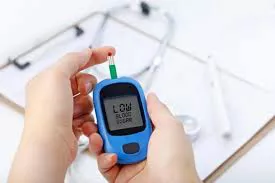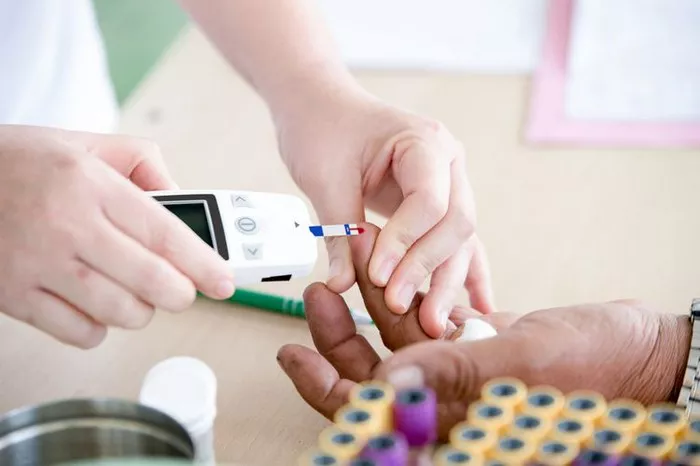Blood glucose monitoring is a crucial aspect of diabetes management, allowing individuals to make informed decisions about their diet, physical activity, and medication. Regular monitoring helps in maintaining optimal blood sugar levels, thereby reducing the risk of long-term complications associated with diabetes. This article delves into the various sites for blood glucose monitoring, highlighting their advantages, disadvantages, and the technology behind these methods.
Fingerstick Testing
Fingerstick testing is the most common method of blood glucose monitoring. This traditional approach involves pricking the finger with a lancet to obtain a small blood sample, which is then analyzed using a blood glucose meter.
Advantages
Accuracy: Fingerstick testing provides highly accurate results, making it the gold standard for blood glucose monitoring.
Immediate Results: The process is quick, typically providing results within seconds.
Widely Available: Blood glucose meters and testing strips are readily available and relatively affordable.
Disadvantages
Pain and Discomfort: Repeated pricking of the fingers can cause pain, discomfort, and calluses over time.
Limited Data: Fingerstick testing provides only a snapshot of blood glucose levels at a single point in time.
User Error: Incorrect technique or inadequate blood sample can lead to inaccurate readings.
Technique
To ensure accurate results, it’s essential to follow the correct technique:
- Wash hands with soap and warm water to remove any substances that may affect the reading.
- Use a fresh lancet for each test to minimize pain and prevent infection.
- Prick the side of the fingertip rather than the pad, as it is less painful and offers more blood flow.
- Gently squeeze the finger to obtain a drop of blood and apply it to the test strip.
Alternative Site Testing (AST)
Alternative Site Testing involves obtaining blood samples from areas other than the fingertips, such as the palm, forearm, upper arm, thigh, or calf. AST can be a viable option for those who experience significant discomfort with frequent fingertip testing.
Advantages
Reduced Pain: Testing on areas with fewer nerve endings can be less painful than fingertip testing.
Less Disruption: Some alternative sites may cause less interference with daily activities, especially for those who use their hands extensively.
Disadvantages
Variable Accuracy: Blood glucose levels from alternative sites may not reflect rapid changes as accurately as fingertip samples, especially after meals, exercise, or insulin administration.
Limited Approval: Not all blood glucose meters are approved for AST, and some devices may only be validated for specific sites.
Technique
Proper technique is crucial for accurate AST readings:
- Follow the meter’s instructions regarding the suitability of alternative sites.
- Ensure the site is clean and dry.
- Use a lancing device designed for AST, which often includes depth settings to control penetration.
- Apply gentle pressure to stimulate blood flow if needed.
Continuous Glucose Monitoring (CGM)
Continuous Glucose Monitoring systems provide real-time glucose readings throughout the day and night, using a small sensor inserted under the skin, typically on the abdomen or upper arm.
Advantages
Comprehensive Data: CGM systems provide continuous data, allowing users to track trends and patterns in their glucose levels.
Alerts and Alarms: Many CGM devices offer customizable alerts for high and low blood sugar levels, enabling proactive management.
Reduced Fingerstick Testing: While some fingerstick tests are still required for calibration, CGM significantly reduces the need for frequent pricking.
Disadvantages
Cost: CGM systems can be expensive, and not all insurance plans cover them.
Complexity: Initial setup and sensor insertion can be challenging for some users.
Sensor Lifespan: Sensors need to be replaced regularly, typically every 7 to 14 days, which can add to the cost and inconvenience.
Technology
CGM systems consist of three main components:
- Sensor: Inserted under the skin, the sensor measures interstitial glucose levels.
- Transmitter: Attached to the sensor, the transmitter sends glucose data wirelessly to a receiver or smartphone.
- Receiver/Display Device: Displays the glucose readings and trends, often with the capability to set alerts.
Flash Glucose Monitoring (FGM)
Flash Glucose Monitoring is a relatively new technology similar to CGM but without continuous data transmission. Users scan a sensor worn on the skin to get a reading.
Advantages
Convenience: FGM is less intrusive than CGM, with no need for frequent calibration.
Cost-Effective: Generally more affordable than CGM systems.
Ease of Use: Simple scanning process to obtain readings.
Disadvantages
No Real-Time Alerts: Unlike CGM, FGM does not provide continuous real-time alerts for high or low glucose levels.
Sensor Life: Sensors need to be replaced every 14 days, adding to the ongoing cost.
Accuracy: May not capture rapid changes in glucose levels as accurately as CGM.
Technology
FGM systems consist of:
- Sensor: Worn on the back of the upper arm, the sensor measures interstitial glucose levels.
- Reader: A handheld device that scans the sensor to display glucose readings and trends.
Non-Invasive Glucose Monitoring
Non-invasive glucose monitoring aims to measure blood glucose levels without piercing the skin, using technologies such as spectroscopy, bioimpedance, and optical sensors.
Advantages
Painless: Eliminates the need for lancets and needles, reducing pain and discomfort.
Convenience: Potentially offers a hassle-free monitoring experience.
Disadvantages
Accuracy: Current non-invasive methods struggle with accuracy and consistency compared to invasive techniques.
Technology Limitations: Many non-invasive devices are still in development or have limited availability.
Technology
Various non-invasive technologies are being explored:
- Optical Sensors: Use light to measure glucose levels in the blood.
- Bioimpedance: Measures the resistance of body tissues to a small electrical current, which changes with glucose levels.
- Spectroscopy: Analyzes the interaction of light with body tissues to determine glucose concentration.
Selecting the Right Monitoring Method
Choosing the appropriate blood glucose monitoring method depends on individual preferences, lifestyle, and medical needs. Key factors to consider include:
Accuracy and Reliability
- Fingerstick Testing: Highly accurate but may cause discomfort with frequent use.
- AST: Less painful but potentially less accurate during rapid glucose changes.
- CGM: Provides comprehensive data and real-time alerts but can be costly and complex.
- FGM: Convenient and cost-effective but lacks real-time alerts.
- Non-Invasive Methods: Painless but currently less reliable.
Cost and Insurance Coverage
- Consider the upfront and ongoing costs of devices and supplies.
- Check insurance coverage for different monitoring methods.
Lifestyle and Convenience
- Assess how each method fits into daily routines and activities.
- Evaluate the ease of use and maintenance requirements.
Medical Conditions and Needs
Discuss with a healthcare provider to determine the most suitable method based on medical history and diabetes management goals.
Future of Blood Glucose Monitoring
Advancements in technology continue to revolutionize blood glucose monitoring, with ongoing research focused on improving accuracy, convenience, and accessibility. Future developments may include:
Integration with Smart Devices
Enhanced integration with smartphones, smartwatches, and other wearable technology for seamless monitoring and data sharing.
Improved Non-Invasive Techniques
Continued research and development of non-invasive methods to achieve accuracy comparable to invasive techniques.
Artificial Intelligence and Data Analysis
Use of AI and machine learning to analyze glucose data, predict trends, and provide personalized recommendations.
Long-Term Sensors
Development of longer-lasting sensors that require less frequent replacement, reducing costs and inconvenience.
See also:How Does the Glucose Monitor Patch Work?
Conclusion
Blood glucose monitoring is an essential component of diabetes management, enabling individuals to maintain control over their condition and prevent complications. With various monitoring sites and technologies available, it’s crucial to choose the method that best suits individual needs and preferences. By staying informed about the latest advancements and working closely with healthcare providers, people with diabetes can achieve better health outcomes and an improved quality of life.
Related topics:
What’s the Benefits of Blood Glucose Management
























